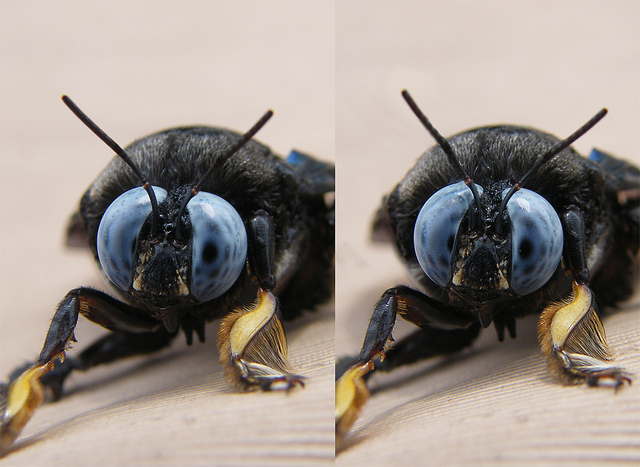Three-dimensional effects effects are most simply achieved by capturing two images of a subject from two slightly removed positions corresponding to the two locations of a pair of human eyes. Such images are typically known as stereo pairs. The optimum distance between the two camera locations is dependent upon the extent of the stereo effect required and the distance to the nearest objects in the frame.
To achieve the required result, a photographer must define a projection plane, and angle the two cameras inward so that the centre lines of the two lenses intersect at this plane. Objects that are closer to the camera than the projection plane appear to be closer to the viewer, and those more distant appear to be further away from the viewer. In general, the separation of the two camera locations should be around 3 - 7% of the distance from the camera to the projection plane.
Once the stereo pair or images has been captured, they must be presented in a suitable manner to the viewer. A number of techniques are available. The key requirement is that each image should be viewed independently by a single eye. This mimics the real-life situation where a normally-sighted person perceives two slightly different views of a subject with their two eyes and the brain combines the images to give perception of depth.
Some normally-sighted people are able to force their eyes to focus on a point beyond the plane of the images and hence see, without additional assistance, a separate image with each eye. Others are able to cross their eyes and see the left image with their right eye and vice versa. "Cross-eye" stereo pairs are intended to be viewed in this way. However both these approaches require some practice.
Another technique involves the use of red/blue glasses to view the two superimposed images, which are presented in the appropriate colour to allow separation by the coloured lenses. Images of this type are known as anaglyphs. A basic limitation of this technique is that only greyscale images can be viewed. An alternative but similar approach uses two projectors equipped with right and left circularly polarized filters to superimpose the two images on a suitable screen and view them through correctly polarized glasses.
|
|
| Crossed pair of the eyes of a carpenter bee - Image by kind permission of Ian Jacobs via Flickr.. |
More sophisticated computer-based techniques are also available. Typically, these involve changing the monitor display rapidly between left-eye and right-eye images, and equipping the viewer with synchronized shuttered glasses controlled by the computer. The shutter on the left side is then closed when the right-eye image is displayed and vice versa.







